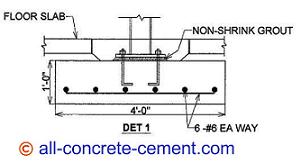|
[?]Subscribe To This Site
|
Strip FootingStrip footing is another name for the commonly known continuous footing, which typically placed beneath foundation walls, shear walls, and bearing walls to spread the load to the ground. These footings when put at the perimeter of a structure provide both vertical support and lateral support needed for the retaining functions of foundation walls. When these footings are at the interior of structures they are mainly to support bearing walls. In residential construction it is extremely rare to see shear walls above interior footings that's the reason most interior footings for homes don’t require anchor bolts.Due to the size of commercial structures, however shear walls and braced frames are very common at the building interior which requires strip footings. Foundation walls are commonly placed at perimeter of structures to retain soil from caving. Below every foundation wall is a continuous footing that will support the foundations both vertically and laterally from earth pressures. 
Another way to characterize this type of footings they are series of spot footing such as the column footing detail in det 1 connected together to increase their load carrying capacity. This is especially true at areas where the soils are too soft and unstable to support individual spot footings. By linking series of spot footings, in effect constructing continuous footings or strip of footings This will increase the contact area between the ground and the footing which will greatly increase it's load carrying capacity.Similar idea with the effect of a single nail on a foot or shoe. A single nail will penetrate through your foot causing pain. If you place hundreds of the same nails adjacent to each other and then step on them, the effect will be drastically different, why? The tip of a single nail is significantly smaller than hundreds of nails put together. By putting the nails adjacent to each other you are increasing the area it will come in contact with your foot thereby increasing the nails ability to lift without penetrating your.
|
|





